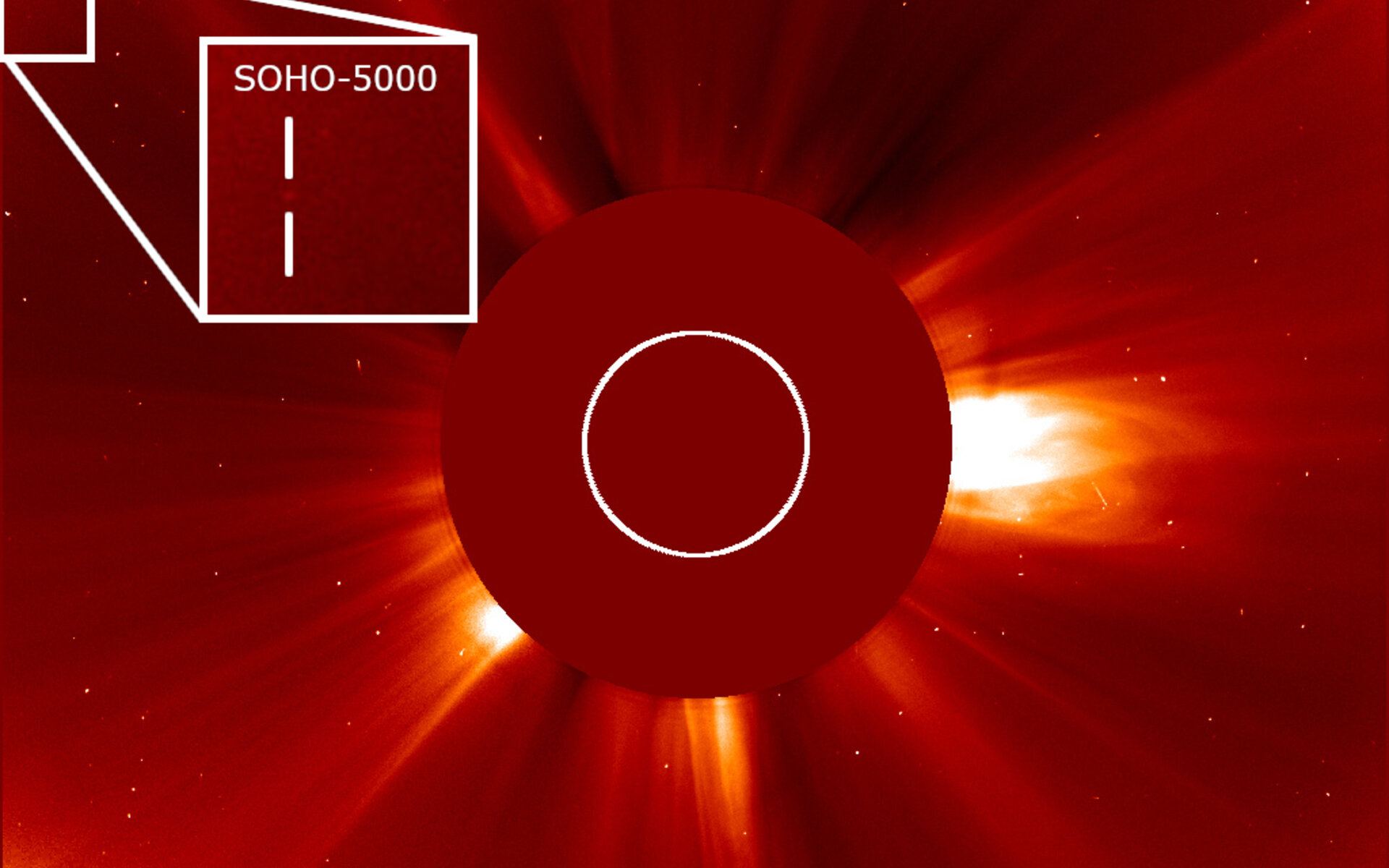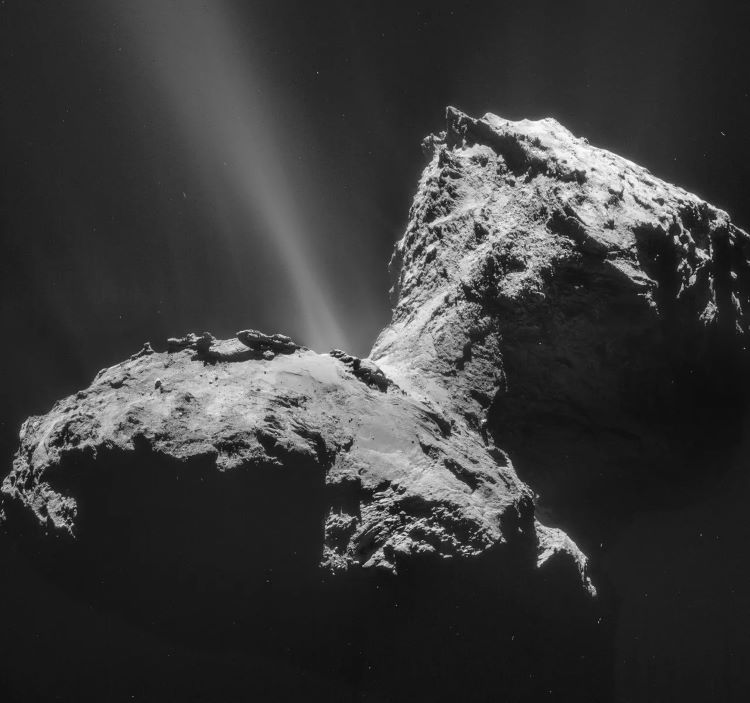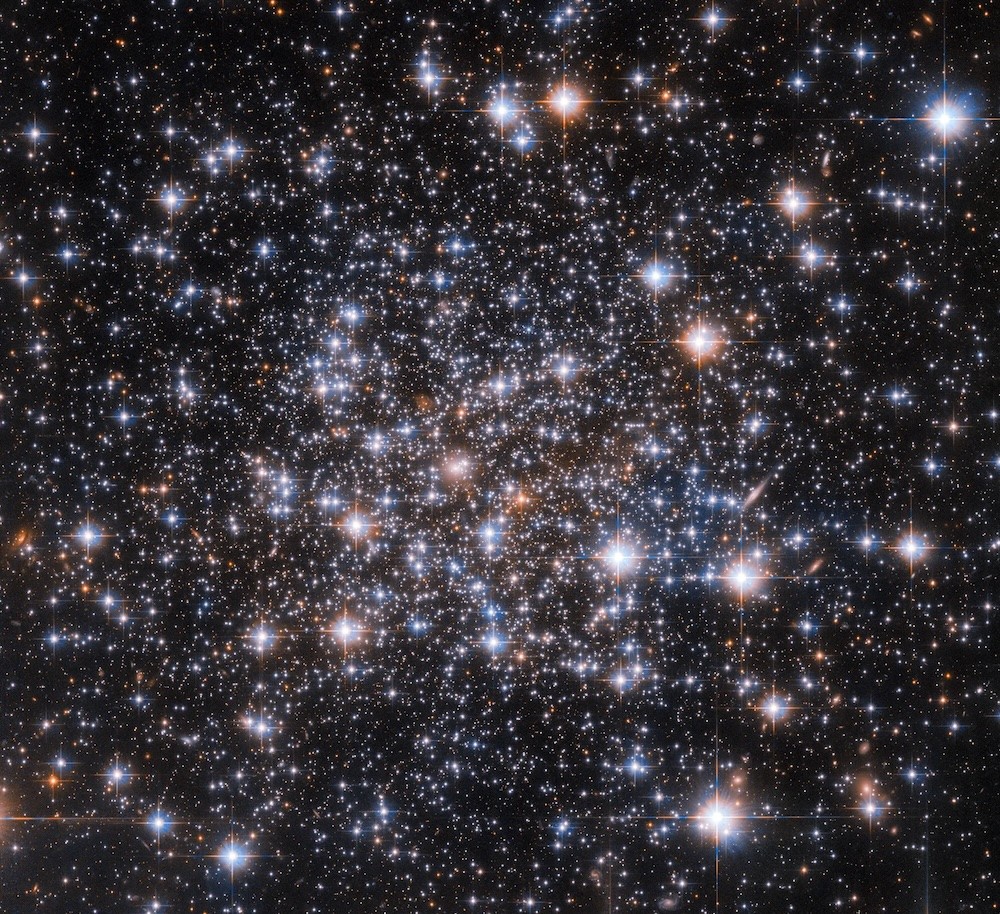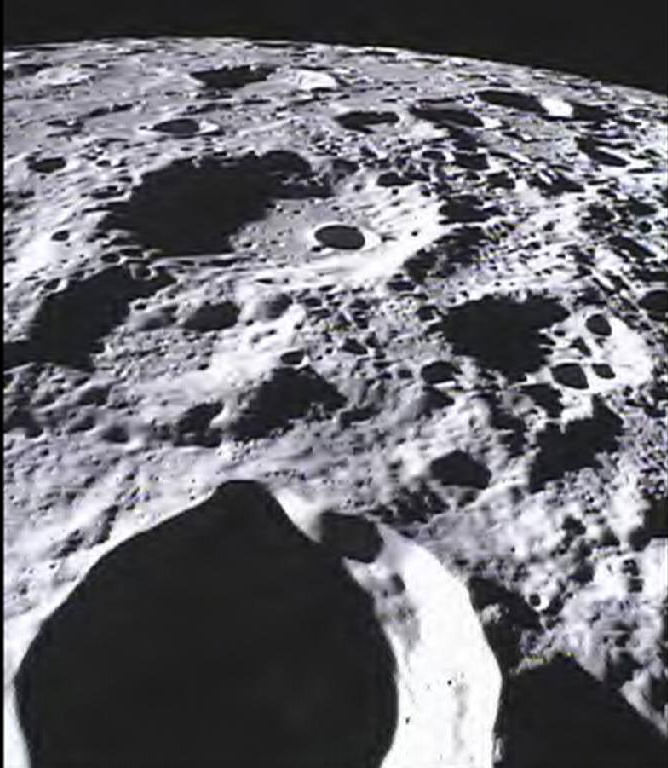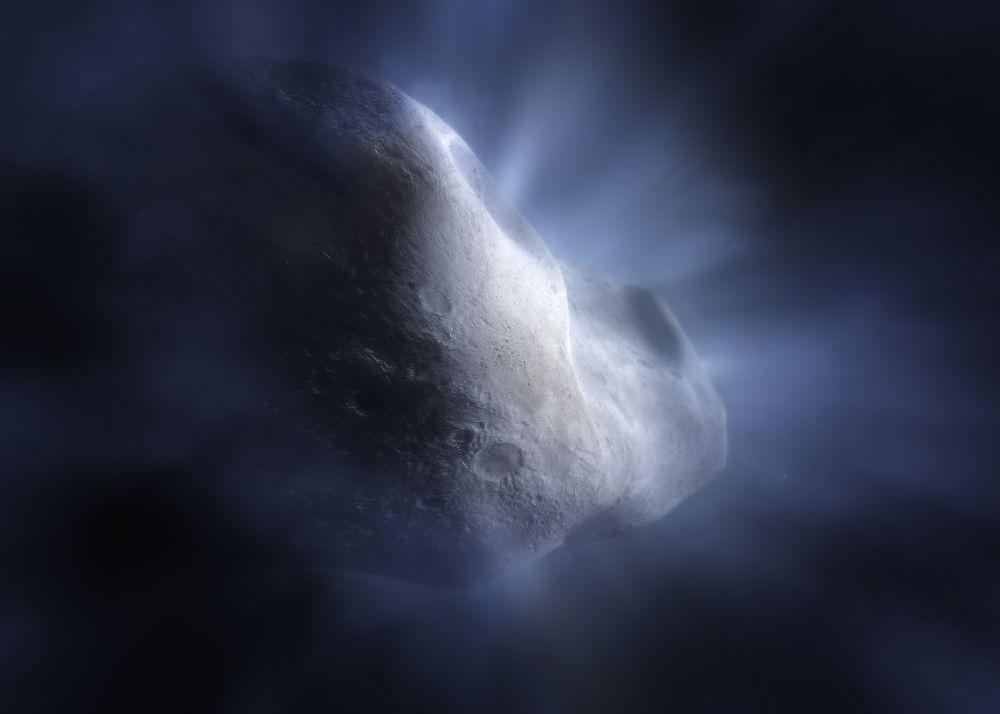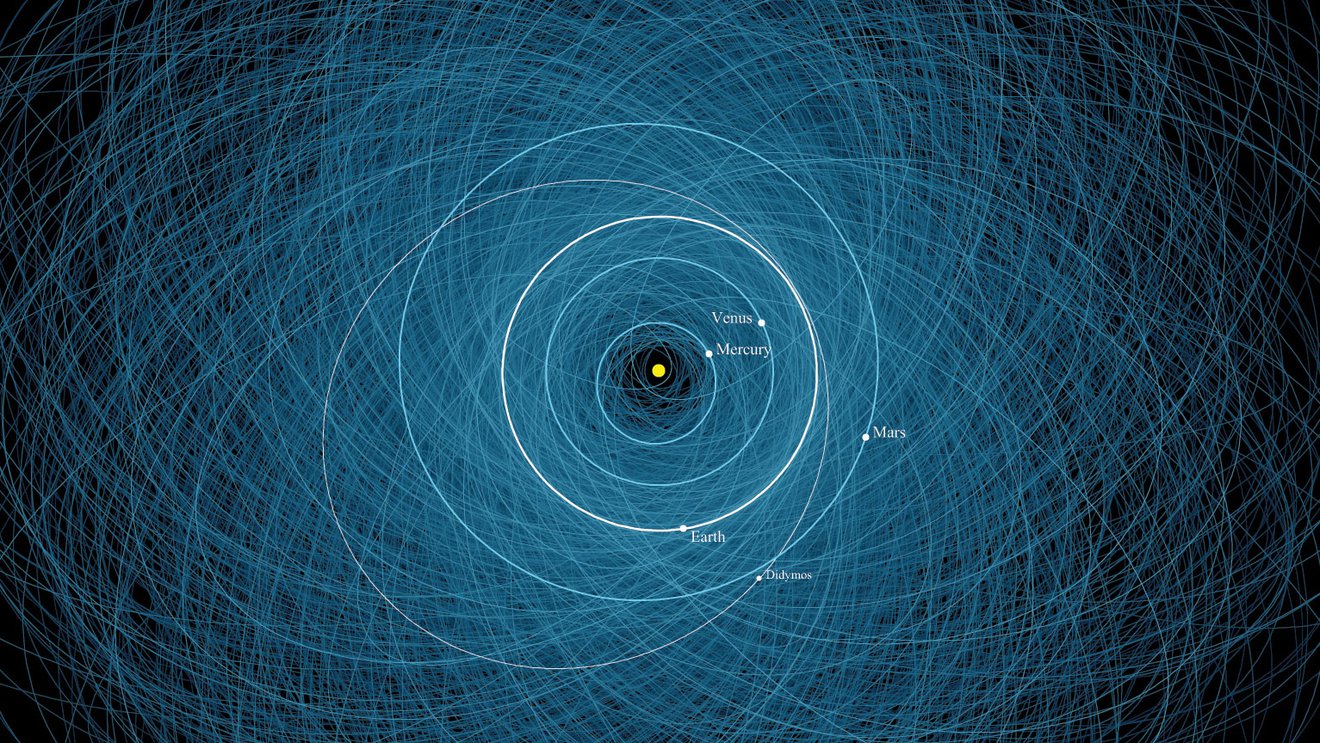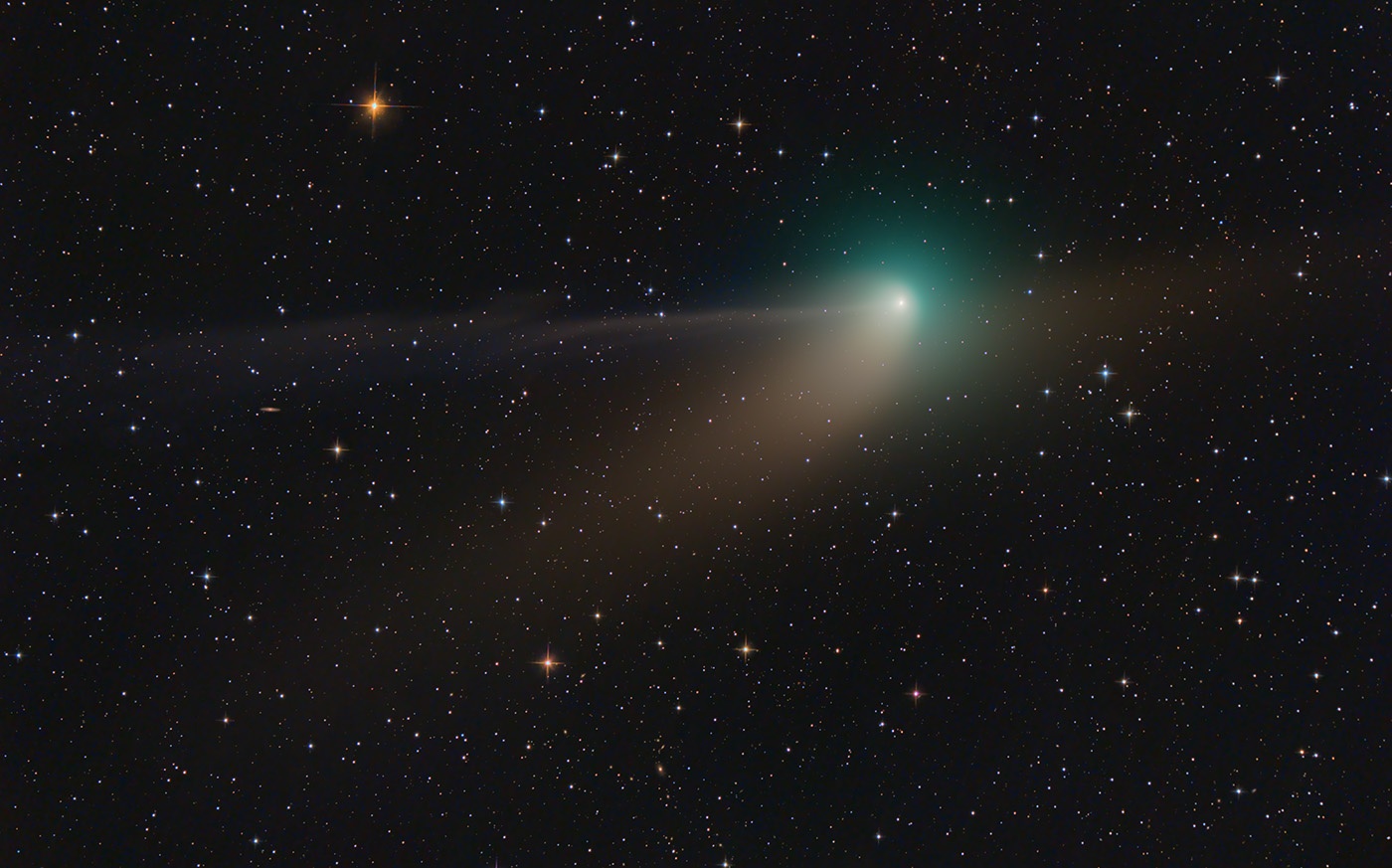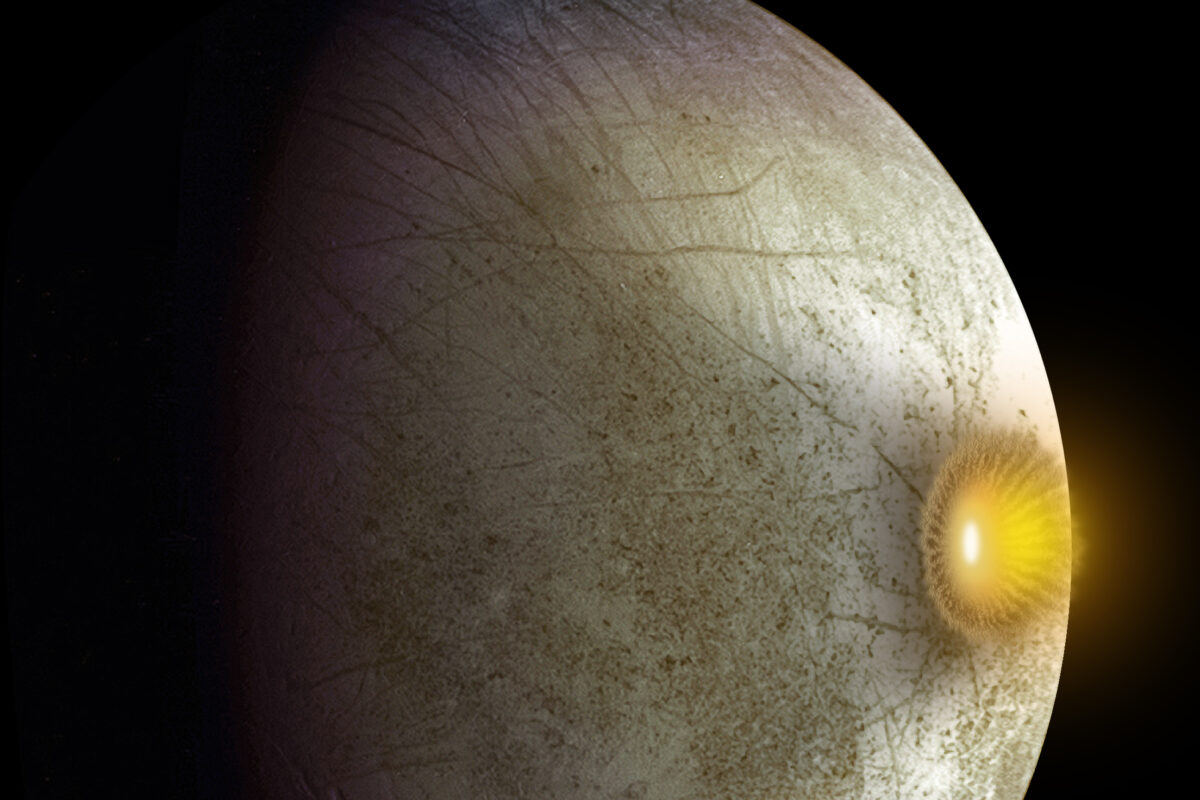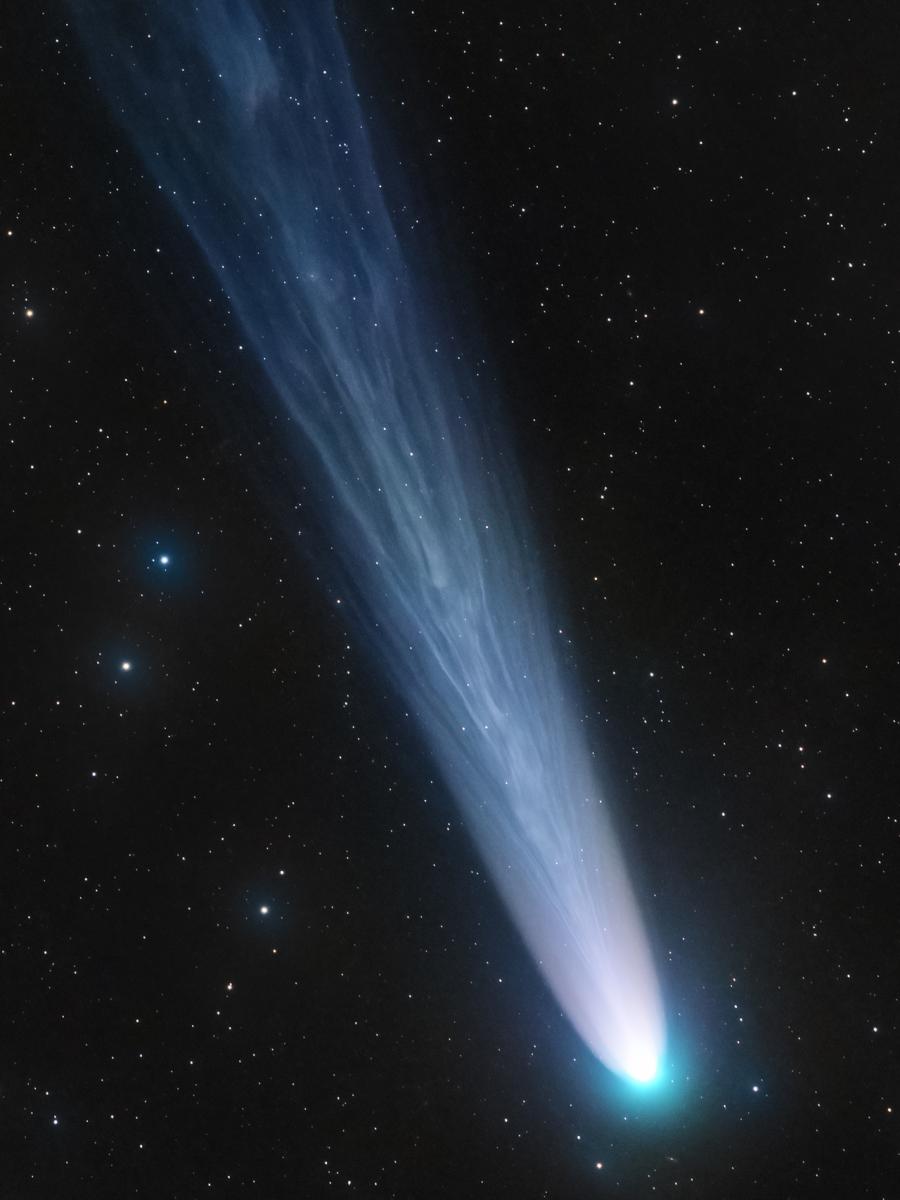The Solar and Heliospheric Observatory (SOHO) was designed to examine the Sun, but as a side benefit, it has been the most successful comet hunter ever built. Since early in the mission, citizen scientists have been scanning through the telescope’s data, searching for icy objects passing close to the Sun. An astronomy student in Czechia has identified 200 comets in SOHO data since he started in 2009 at the age of 13. He recently spotted the observatory’s 5,000th comet.
Continue reading “Someone Just Found SOHO's 5,000th Comet”Someone Just Found SOHO's 5,000th Comet
